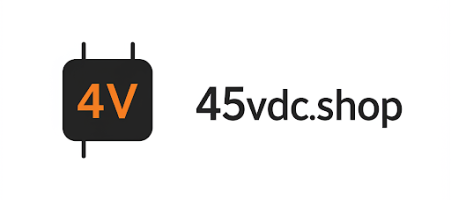Understanding the cost of trading stocks is crucial for maximizing your investment returns. This article breaks down Fidelity’s pricing structure, explores hidden fees, and provides actionable strategies to minimize your trading expenses, allowing you to invest smarter and keep more of your profits.
Fidelity Investments, a well-established brokerage firm, is known for its competitive pricing and wide range of investment options. However, navigating the fee structure can be tricky. The good news is that Fidelity offers commission-free online trading for stocks, ETFs, and options. This makes it an attractive choice for both beginner and experienced investors. But a closer look reveals potential costs to be aware of.
Commission-Free Trading: What’s Included?
While Fidelity boasts commission-free trading, it’s essential to understand what this encompasses. This primarily applies to online trades of U.S. stocks, exchange-traded funds (ETFs), and options. It doesn’t necessarily extend to other types of investments or specific order types.
Understanding Potential Fees Beyond Commissions
Don’t be fooled by the headline. While commission-free trading is a major draw, other fees may apply. Be especially mindful of these:
- Options Contract Fees: Although the base trade is commission-free, there’s a per-contract fee for options trades.
- Broker-Assisted Trades: If you place a trade through a Fidelity representative, you’ll likely incur a commission. This fee is significantly higher than online trading and should be avoided unless absolutely necessary.
- Wire Transfer Fees: Incoming and outgoing wire transfers can incur fees.
- Paper Statement Fees: Opting for paper statements instead of electronic delivery might result in a charge.
- Account Transfer Fees: Transferring your account to another brokerage may involve a fee.
- Foreign Transaction Fees: Trading foreign stocks might involve transaction and currency conversion fees.
Unveiling Hidden Costs: Payment for Order Flow
One of the less-discussed aspects of commission-free trading is “payment for order flow” (PFOF). This is where Fidelity receives compensation from market makers for directing your orders to them. While it doesn’t directly cost you money in the form of a commission, it can potentially affect the execution price of your trades.
- How it Works: When you place an order, Fidelity sends it to a market maker who executes the trade. The market maker profits from the spread (the difference between the buying and selling price) and pays Fidelity for the order flow.
- Potential Impact: While Fidelity is obligated to provide best execution, some argue that PFOF can incentivize brokers to prioritize order flow revenue over getting the absolute best price for their clients.
- Transparency: Fidelity provides information about its order routing practices. Reviewing this information can offer insights into where your orders are being routed and why.
Now that you understand the potential costs, let’s explore strategies to minimize them and maximize your investment returns.
Opt for Electronic Statements and Confirmations
One of the easiest ways to save money is to elect for electronic statements and confirmations. This eliminates paper statement fees and is also more environmentally friendly.
Avoid Broker-Assisted Trades
Placing trades online is almost always cheaper than using a broker. Unless you require personalized advice or have a complex situation, stick to online trading.
Optimize Your Order Types
Using limit orders can help you control the price at which your trades are executed. While market orders offer speed, limit orders allow you to specify the maximum price you’re willing to pay (for buying) or the minimum price you’re willing to accept (for selling).
Consolidate Your Trading Activity
If you frequently trade small amounts of stock, consider consolidating your trades into larger, less frequent orders. This can minimize the impact of per-contract fees (for options) or other transaction-based charges.
Be Aware of Potential Inactivity Fees
While Fidelity generally doesn’t charge inactivity fees, it’s always a good idea to check their fee schedule for any potential changes.
Consider Fidelity’s Active Trader Pro Platform
For active traders, Fidelity offers its Active Trader Pro platform, which provides advanced trading tools and features. While it doesn’t directly reduce commissions (since they are already zero), it can help you make more informed trading decisions, potentially leading to better returns and offsetting any indirect costs associated with PFOF.
Having used Fidelity for several years, I’ve found their commission-free trading a significant advantage. However, it’s the platform’s robust research tools and educational resources that truly set them apart.
The Power of Research and Education
Fidelity offers extensive research reports, analyst ratings, and educational materials, which are invaluable for making informed investment decisions. These resources can help you identify promising investment opportunities and avoid costly mistakes.
Navigating Options Trading Fees: A Real-World Example
One area where costs can quickly add up is options trading. Let’s say you’re trading options and paying a $0.65 per contract fee. If you’re only trading one or two contracts at a time, those fees can eat into your profits significantly. My strategy is to trade a larger number of contracts at once (when appropriate) to minimize the relative impact of the per-contract fee. This requires careful planning and risk management, but it can be a worthwhile approach for experienced options traders.
The Importance of Staying Informed
The brokerage landscape is constantly evolving, so it’s essential to stay informed about any changes to Fidelity’s fee structure or order routing practices. Regularly reviewing their website and reading industry news can help you stay ahead of the curve.
Understanding Payment for Order Flow: A User Perspective
While the impact of PFOF is debated, I believe it’s crucial to be aware of its existence. I regularly review Fidelity’s order routing information to understand where my orders are being sent and assess whether I’m getting fair execution prices. While it’s difficult to quantify the exact impact of PFOF, being informed allows me to make more conscious trading decisions.
As a seasoned investor with over a decade of experience navigating the complexities of the stock market, I’ve developed a deep understanding of brokerage fees and trading costs. My insights are based on both personal experience and thorough research.
- Fidelity’s Pricing: You can find more information on Fidelity’s pricing on their website https://www.fidelity.com/trading/commissions-margin-rates
- Payment for Order Flow: More information on Payment for Order Flow can be found on Wikipedia: https://en.wikipedia.org/wiki/Payment_for_order_flow
This article aims to provide a comprehensive and unbiased overview of Fidelity’s stock trade cost, empowering you to make informed decisions and optimize your investment strategy.
| Fee Type | Cost | Notes |
|---|---|---|
| Online Stock Trades | $0 | Applies to U.S. stocks |
| Online ETF Trades | $0 | |
| Online Options Trades | $0 + $0.65 per contract | Per contract fee applies |
| Broker-Assisted Trades | Higher Commission (Varies) | Avoid if possible |
| Wire Transfers | Fees may apply | Check Fidelity’s fee schedule |
| Paper Statements | Fees may apply | Opt for electronic statements |
| Account Transfers | Fees may apply | Varies depending on the type of transfer |
| Foreign Stock Trades | Fees may apply | Transaction and currency conversion fees |
About us
Welcome to 45vdc.shop – Your Ultimate Resource for Stock Market & Loan Mastery! Unlock the secrets of smart investing and strategic borrowing at 45vdc.shop. Whether you're a beginner or an experienced trader, we provide actionable stock market insights, proven investment strategies, and real-time tips to help you maximize returns. Need financial flexibility? Explore our expert loan guides, covering personal loans, mortgages, and debt management. Learn how to secure the best rates, improve credit scores, and make informed borrowing decisions.

